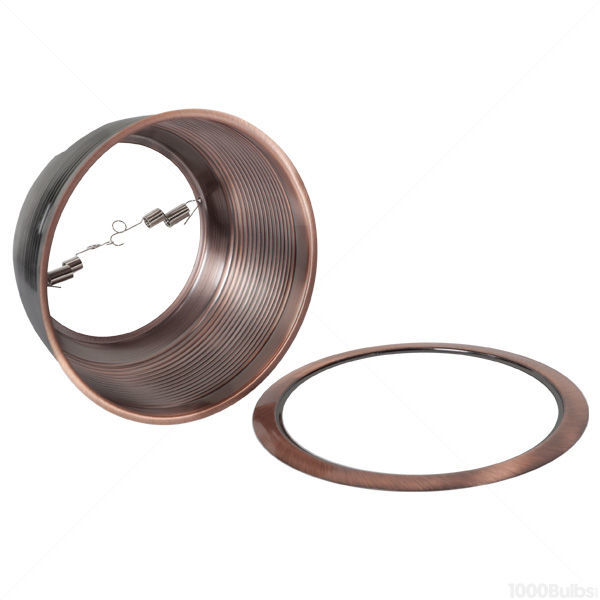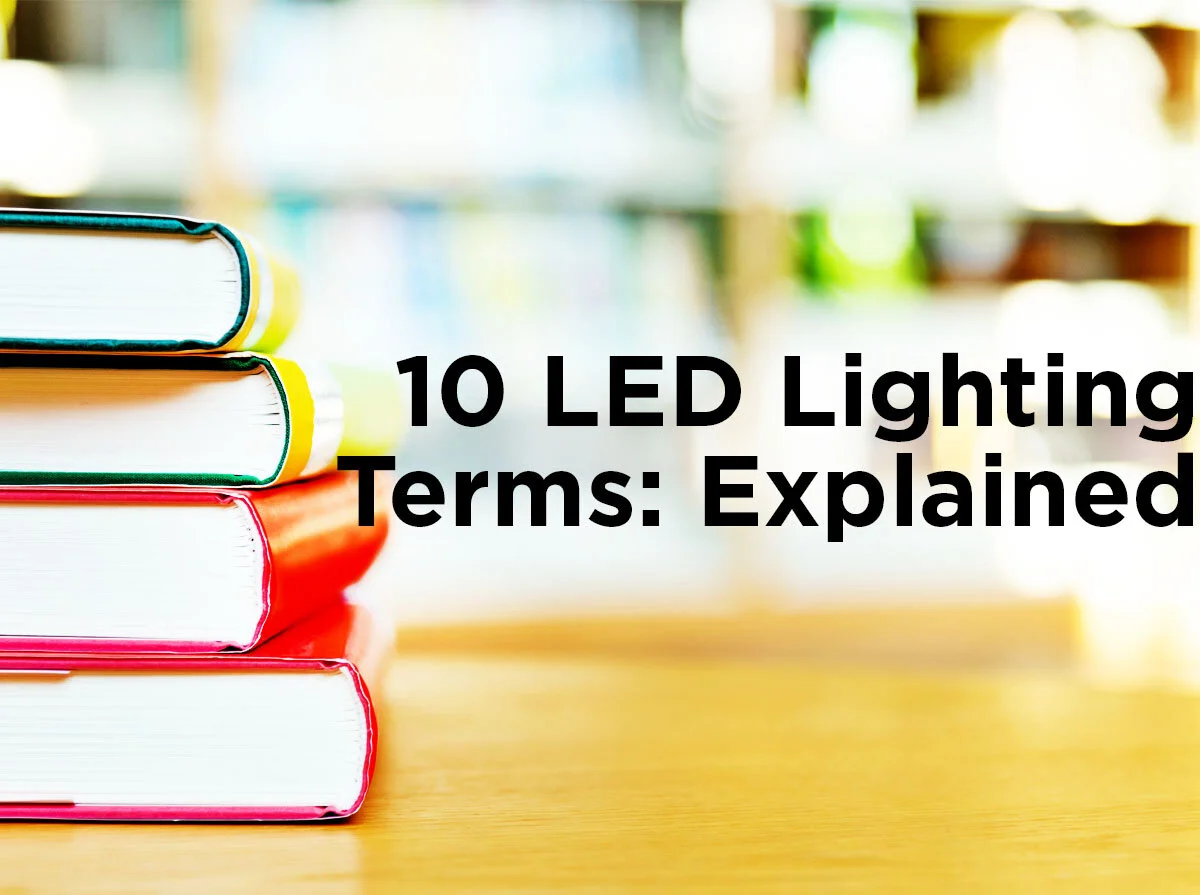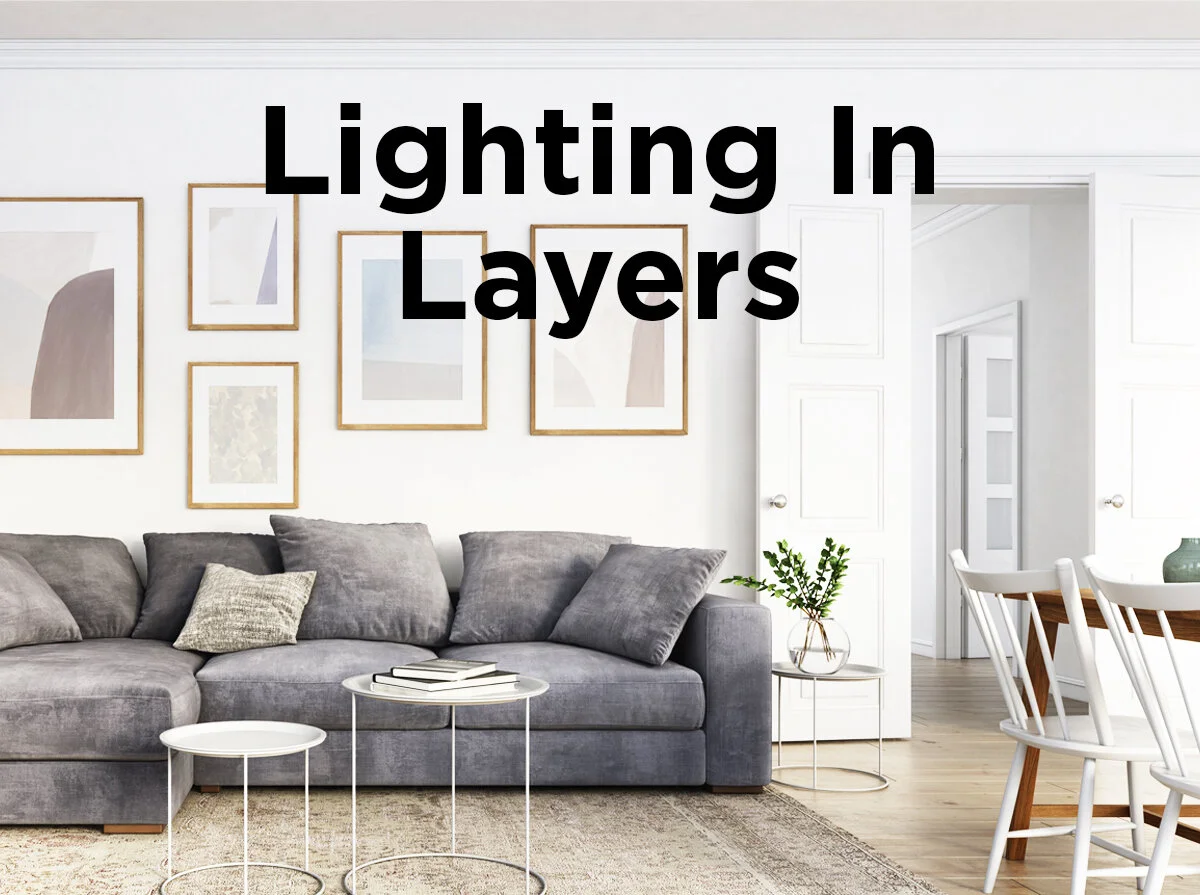Lighting Terms Explained
Lighting is easy to use. A flick of the switch and your dimly-lit cave becomes a glowing island of light for your latest activity. Yet sometimes lighting can be frustrating , especially when your supposedly brilliant illumination refuses to do the one thing required of it: light up. This perplexing problem will send you head-first into manuals, guidelines, and specifications filled with jargon you didn’t even know existed. Rest assured that the staff of 1000Bulbs.com understands your confusion and wants to shed some light on lighting terms that mean more than what meets the eye.
Baffle – It means more than the bewildered look you get when Aunt Mary brings her three Corgis to the annual family Christmas party and proceeds to lead them in a canine version of “Carol of the Bells”. Baffle refers to the trim typically found on recessed lighting fixtures. A popular cover for can lights, it is commonly designed with concentric ridges in the interior to reduce glare as the light shines downward. A baffle can soften the effects of a light in your home or office, allowing you to enjoy the room or concentrate on a task without a spotlight burning your retinas.
Binning – Have you “binning” where lately? All puns aside, your LEDs can vary in color from year to year, brand to brand, and even generation to generation within the same brand. LED coloring is a lot like having custom paint mixed for you at the hardware store, the color will be a close approximate of what you requested. Binning is the separation of LED diodes by color. LED diodes are produced in large batches or production bins. During that time period, many LED fixtures will be made using those diodes until the next production bin arrives. However, the new production bin may have a slight difference in color, still close to the color temperature specified on the package but noticeable when both LED bulbs are lit side-by-side. If you come across a color that you can’t live without, the best advice to prevent a doppelganger and ensure an identical twin is to buy all of your LEDs at one time.
Daisy Chain – It may not smell sweet but it will allow you to see your real flowers. Daisy chaining is a wiring method where all devices are linked together sequentially and only the first device is physically connected to the power source. You can use daisy chain wiring to power light fixtures, sprinklers, or even computers. Just be aware of voltage drop problems. Up next is a tip-toe through the tulips… just kidding!
Eyeball Trim – Vaguely similar to our friend the baffle, eyeball trim is used with recessed light fixtures to grant the lamp an adjustable angle. The bulb sits in the “eyeball”, which often can be rotated vertically up to 40 degrees and horizontally up to 360 degrees, with a traditional trim surrounding it.
Ganging – This is the part where I tell you that at night, your switches and dimmers come together in a ferocious clash of power! In reality, the explanation is a little less exciting. Ganging is the process of arranging multiple electrical devices or machines together to work in coordination. That is the simple explanation. A more involved answer is that ganging is used when you need to control several lights on several different circuits or several independent lights and devices on one circuit from one location. Examples include the need to control a ceiling fan and a separate light in the same room or lights located at the top and the bottom of a staircase. Another common ganging situation is when a dimmer and a light switch are linked together, giving you ambience control and the ability to simply turn the light on and off. You know switches are ganged together when you see a continuous multi-switch wallplate covering them.
Gobo – Do you remember how you used to fold your fingers in front of a lamp to make the bunny shadow? That is the same principal as a gobo. A gobo is stencil or template, made of heat-resistant material like metal or glass, and arranged like a lens in front of a light source. The resulting effect of having a gobo in place shapes the light into a pattern for your viewing pleasure. Gobos can allow your light to project anything, from a basic outline to more complex images like a full color version of Earth.
Polycarbonate – Polycarbonate is just another word for plastic. That is all. (It is also temperature and tamper-resistant, but it’s still plastic.)
Sconce – They are magically delicious! Sweet, cakey goodness topped with butter—oh wait, that’s a scone. The extra “c” makes the difference; a sconce (not a scone) is decorative light fixture fixed to your wall. Wall sconces can make their appearance in many areas of your home. Beside your bed, next to your bathroom mirror, in your hallway, or above your foyer table, wall sconces add a classic charm to interior lighting. They are mounted via an ornamental bracket to the wall and can vary in style and number of lights per sconce, from the abstract and ultra-modern to the time-honored candlestick replica.
Snoot – You can give your lighting a snout with a snoot. It is literally a hollow cone-like object, almost like a cheerleading megaphone, meant to reduce and control the amount of light from a source. A snoot is most likely to be used with stage or studio lights and restricts the light source’s beam angle to whatever area it is pointing at; the longer the snoot, the tighter the beam.
Wall Washing – Wall washing is a lighting technique that evenly illuminates a wall. Using lights mounted at or above ceiling height, position your lights to shine over the entire wall from top to bottom. This hides any imperfections and eliminates shadows. You can see this technique in practice at your local art museum or gallery. You can learn more about wall washing and its play-cousin, wall grazing in our article on the topic. Or you can grab the dish soap and begin scrubbing. Both are beneficial to the wall.
If you need a good chuckle or to know more fascinating lighting terms, check out our handy-dandy glossary of light-related words. Questions about definitions, comments about what really started the Switching-Dimming Revolutionary War, or suggestions for the best lamps for shadow puppetry can be written in the comment area below. Get extra trivia points by dropping some serious knowledge on your friends and family when you read articles on our blog and updates via Facebook, Twitter, LinkedIn, or Pinterest. Our customer service representatives at 1000Bulbs.com would like convey that while scones are tasty, they have very short lifespans and recommend you use wall sconces to light your home instead.








